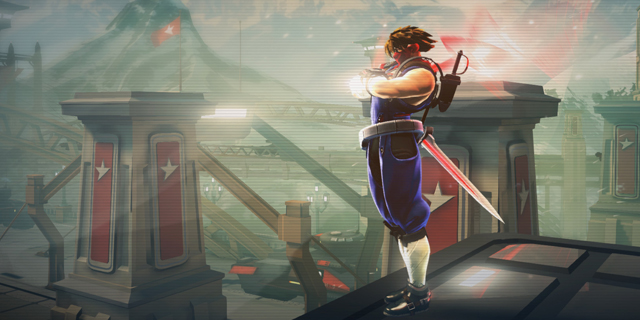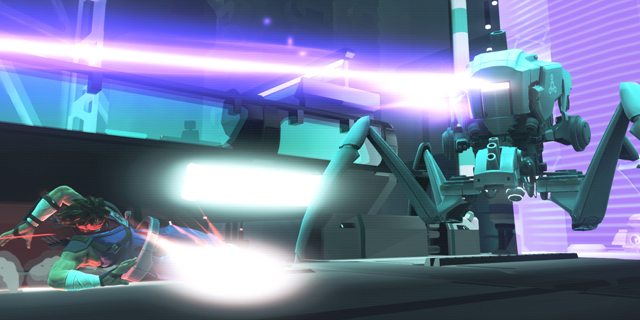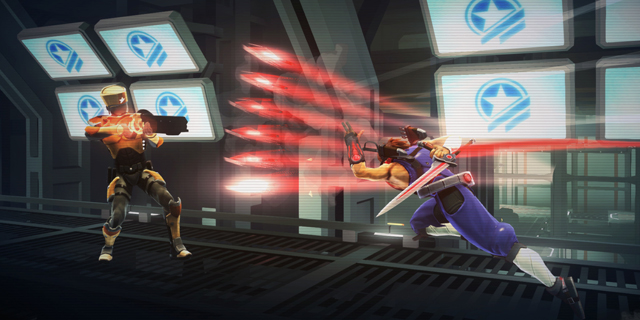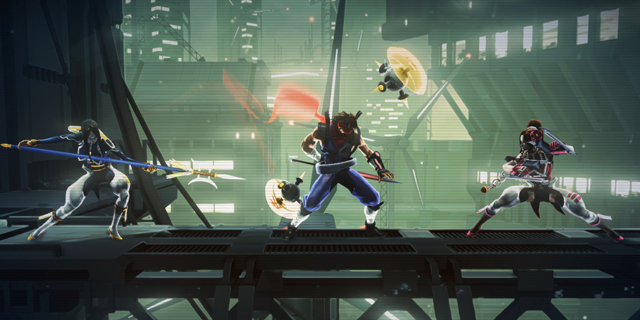
Capcom’s Strider series began its life as an arcade action-platformer before slowly making its way to home consoles. Soon enough, however, Strider simply disappeared, relegating its lead character, Hiryu, to guest appearances in crossover titles such as the Marvel vs. Capcom series. Rumors of the return of this iconic franchise circled for years before a new game, developed by Double Helix, was announced. While this new Strider may not be a perfect recreation of the earlier titles, it differentiates itself by adding a new twist to a well-worn formula.
The original Strider titles focused almost entirely on moving from left to right and destroying any and all enemies in your path. Like many of the era, it was a rather simplistic series, but the smooth controls and varied levels made each game stand out. Double Helix’s Strider reimagining does many of the same things, focusing on Hiryu’s movement and combat abilities, but also aims for more Metroid-style exploration, complete with gaining new abilities along your journey. It maintains everything great about the original games while adding some complexities to the mix, and it does so brilliantly.

Hiryu’s basic movement and attack speed feel just right. Right from the beginning, you get a sense of his abilities, allowing you to jump right into the action almost immediately. Simply moving and jumping as Hiryu is immensely satisfying, and being able to take down enemies rapidly while moving across large levels helps it feel just like the classics in the best way possible. Once you start getting deeper into the game, you’ll gain new abilities as well as plenty of enemies to test those abilities, adding to the difficulty. It’s still not a difficult game, but the variety helps keep you on your toes.
As you gain new abilities, you gain entry to areas you couldn’t previously access, usually leading you to new power-ups and other such collectibles. If you’ve ever played a Metroid game or one of the many recent inspired titles such as Shadow Complex and Guacamelee, you know exactly what to expect here. The environments are rather bland and exploring them isn’t as rewarding as some other, similar games, but there was still plenty that kept me coming back for more.

Many of the new abilities play into combat and give you more to mess around with beyond your standard attack. Not only do you have your projectile, the kunai, but you can also call on a hologram animal friend to assist you in battle, such as an eagle or a jaguar. These guys are helpful when you’re surrounded by enemies or simply need assistance during the game’s many boss battles. On top of that, you can switch your basic attacks properties to explosive, ice or magnetic. Each has its own benefits, such as being able to freeze your foes with the ice attacks or create lasting fire damage with the explosive attacks, which changes things up just enough.
Despite the added gameplay variety and exploration, the base mechanics, most notably the combat, still suffer. The variety of different powers and abilities you gain rarely feel like necessary additions, since the majority of the enemies can be taken down with relative ease by simply mashing the attack button. It’s still fun in an arcade sort of way, but it can become tedious after a while. Sure, certain enemies will require more than standard attacks to take down, but I never found myself in desperate need to use more than the basics for the majority of the experience.

There could have been more done with the Strider formula, including adding more depth to the game’s combat, but I still had an excellent time with Double Helix’s take on the series. Expanding it to focus more on exploration and discovery was the right move and the controls are as close to perfect as this style of game gets. Even if you know very little about this once-prominent franchise, the new Strider is well worth your time.
Pros: Excellent controls and movement speed, nice variety of abilities
Cons: Repetitive combat, bland environments



















